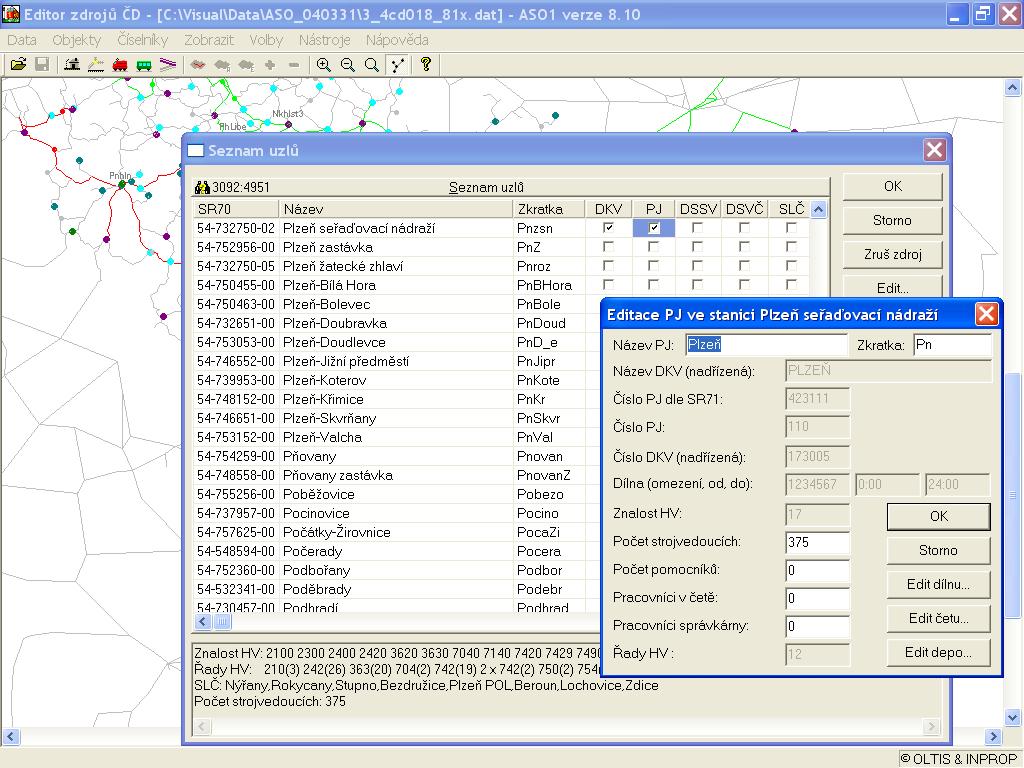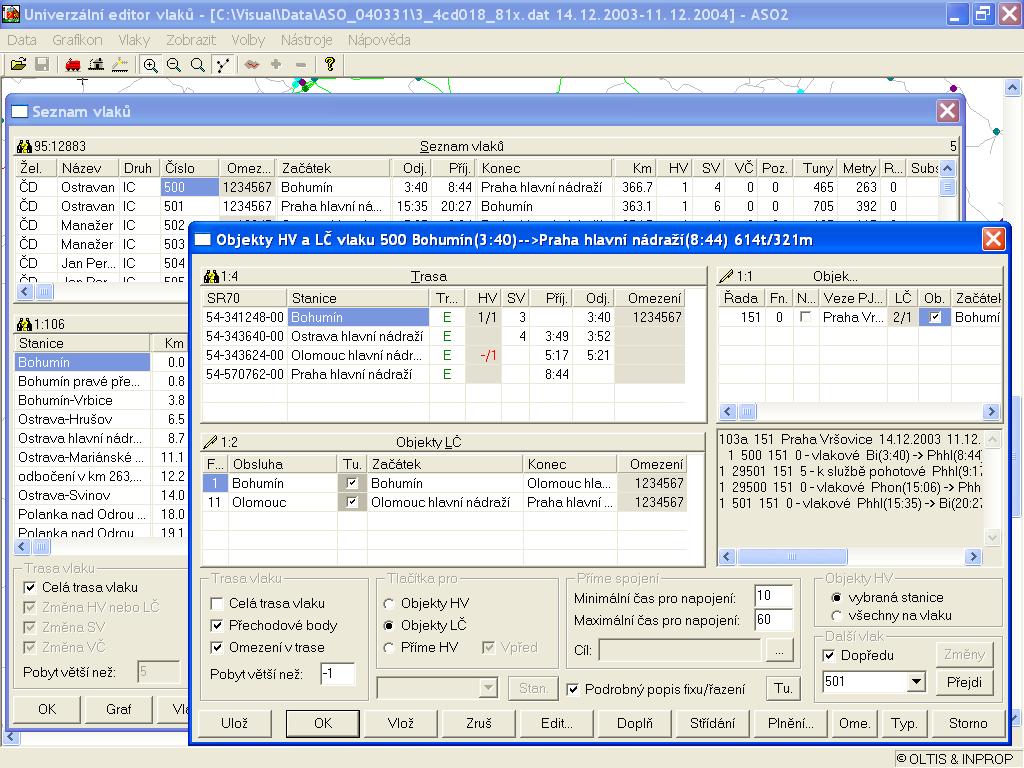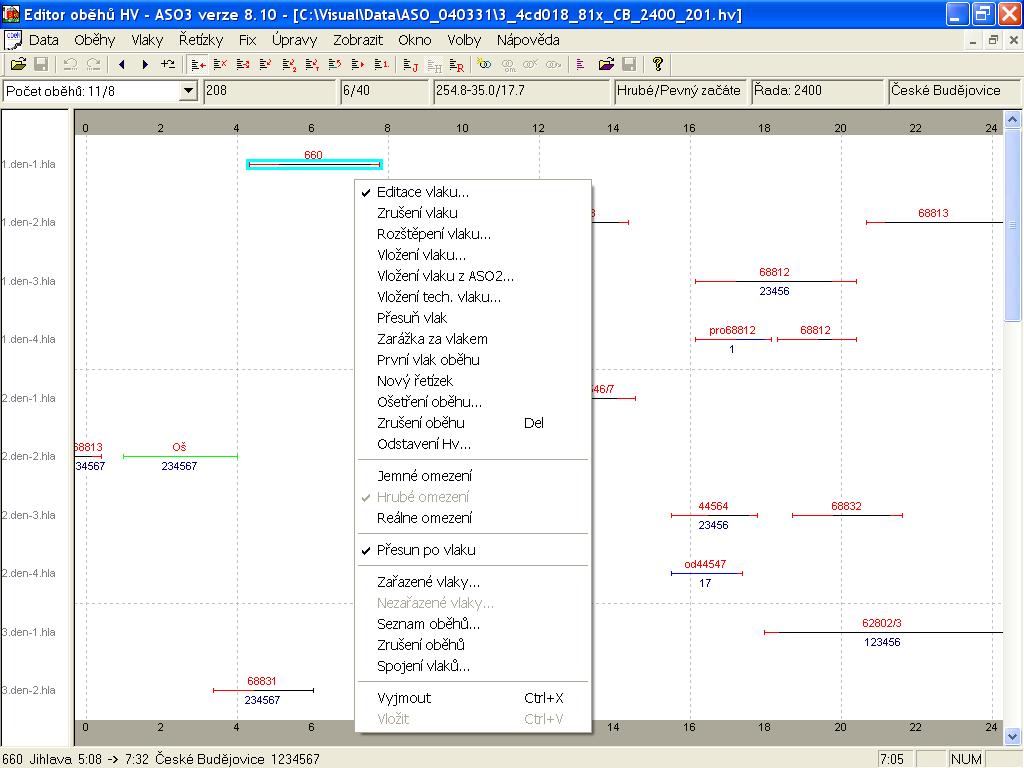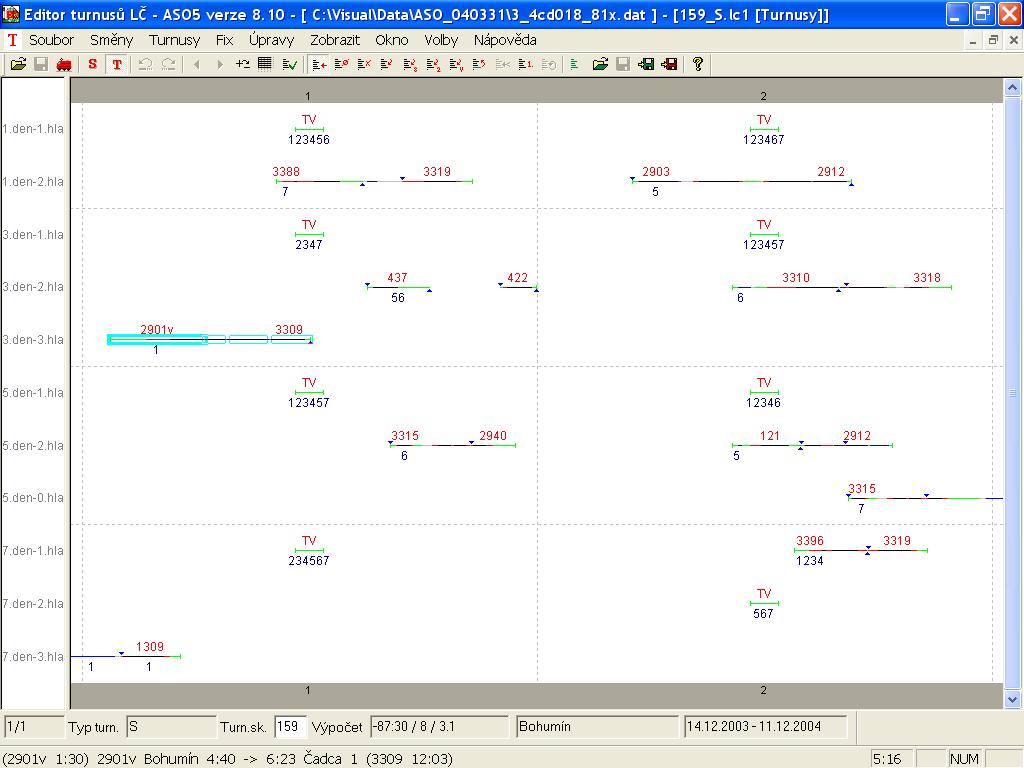ASO
In the mid 1990’s, the company České dráhy (Czech Railroads) began developing information systems for designing rail transport schedules. It was built on three information systems:
- CEV – Central editor of trains
- SENA – Timetable designer
- ASO – Automated circulation system
The CEV system was developed at the University of Pardubice in the Czech Republic, the SENA system was developed by researchers at the University of Zilina in Slovakia, and the ASO system was developed by the INPROP company.
The creation of the train timetables began in the CEV system, where the carrier entered basic information about trains. The carrier subsequently specified data about locomotives in the ASO system. Finally, the track operator’s constructer calculated the time location of the trains in the SENA system.
Subsequently, the train objects were entered into the ASO2 system – locomotives, train-sets, locomotive crews and train crews, serving as input data for planning circulations and shifts. Locomotive circulations were created using the ASO3 system, and train-sets circulations using the ASO4 system. The ASO5 system was used for planning locomotive crew shifts and the ASO6 system for train crew shifts. The matrices of shifts and circulations were then visualised in the ASO-Gepard system. The synchronization of the ASO system with other information systems was ensured by the ASO7 system using removable text files.
Additionally, the ASO system included the ASO1 system, in which the code lists and railway network were managed, and also the ASOU system, in which outputs from various train indicators were calculated (train kilometres, train-set kilometres, etc.)
All ASO programs use one data file containing all required data about:
In 2006, as the information technologies moved significantly forward, the development of new applications for designing rail transport schedules has been launched. In the same year, the main operator of Slovak railways, Železničná spoločnosť Slovenska, began using the ASO system under the name ASO_SK.
Currently, the ASO system is not actively used anymore. It was replaced by the modern information system KASO.





